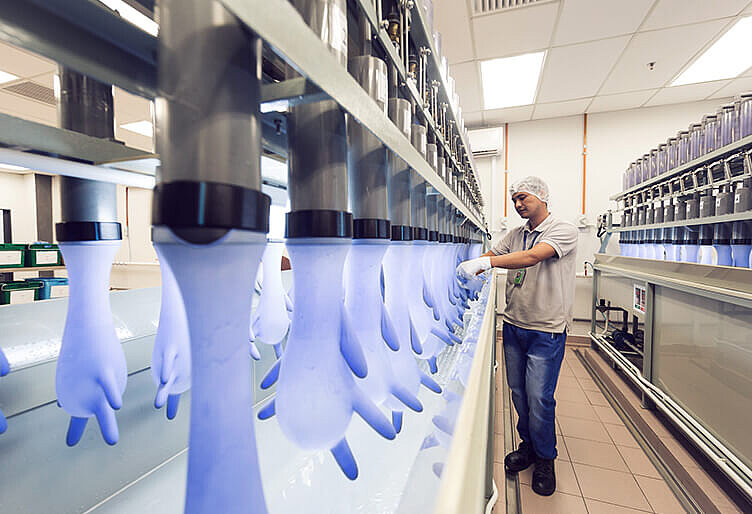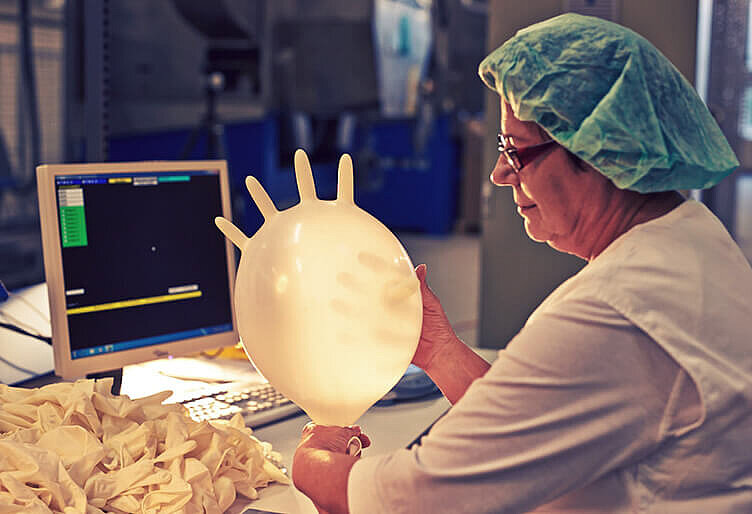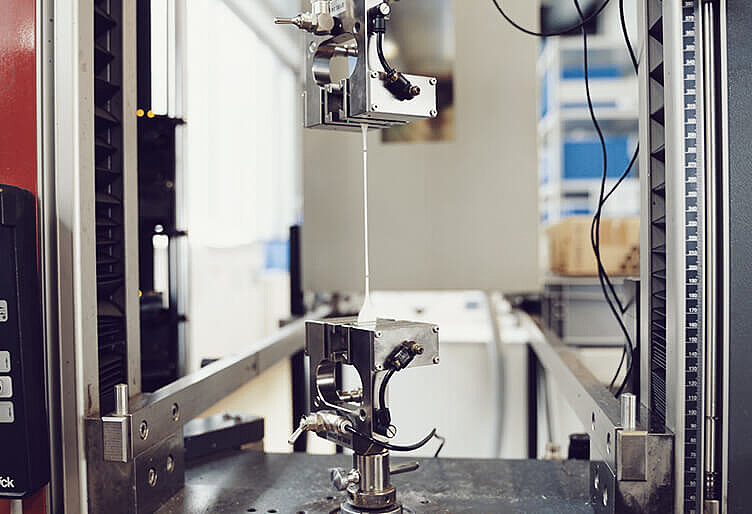
Quality measurements
Premium glove quality for maximum safety
Striving for high quality is the basis of our success. Each and every day, our customers trust our gloves. This earned trust can be attributed to our high quality and stringent safety standards. Sempermed gloves are regarded as some of the best products on the market in terms of quality. The fact that we continue to improve our quality procedures ensures that it stays this way. Learn more about our quality procedures below.

AQL - Acceptable quality limit
The most important criteria for measuring quality in mass production
To determine the AQL of a production lot, measures from ISO 2859-1 must be followed. This standard was established and further developed during the world wars out of the necessity to assess the quality of bullets. However, in order to test if a bullet can be fired, it needed to be fired; which is a good example for destructive testing. Similarly for products testing of many product properties of gloves destructive test are required such as the water-leak and force at break test. For barrier performance testing, die AQL is the widely regarded industry standard.
Measuring the AQL
Maintaining highest quality standards
To determine the Acceptable Quality Limit (AQL), a specified quantity is taken from the batch of manufactured products for random testing in accordance with a clearly defined procedure. These samples undergo a test against specified standards and specifications. On the basis of the results, conclusions can be drawn regarding the quality of the whole batch. Naturally, the higher the standard required from a product, the more stringent are the prescribed guidelines. The AQL is thus a statistical procedure of quality control. Currently in Europe the required AQL for surgical gloves is less than 0.65, whereas the AQL for examination gloves is less than 1.5. The AQL can be tested by the Water retention test and the Air test.
Do you want to know more about the determination of the AQL value?

Water retention test
Detecting pinholes with the help of water
The water retention test, also referred to as water leak test, checks how watertight protective gloves are. The glove is filled with one liter of water and must remain completely leak-proof over a precisely defined period of time. In addition, the operator performs a practiced movement whereby the inflated glove is placed in front of the face in order to sense potential draught of the outflowing air.

Air test
Detecting pinholes with the help of air
During the process of air testing, the glove is inflated to a defined pressure which ensures that even the tiniest perforations will be detected. In addition, the operator performs a practiced movement whereby the inflated glove is placed in front of the face in order to sense potential draught of the outflowing air.

Elongation stress test
Measuring tensile strength by extension
Protective gloves must offer maximum safety even under extreme levels of stress. The determining factors are its robustness and tear resistance. Strict monitoring of production, constant controls and state-of-the-art production methods mean that Sempermed gloves guarantee optimum protection even under the toughest conditions.
Our quality is certified
Sempermed's manufacturing plants and the entire manufacturing process are subject to stringent quality inspections and are regularly audited by TUV and inspected by FDA.
Therefore, we have a number of certificates proving our quality.
We will gladly send you certificates by e-mail if you request them.